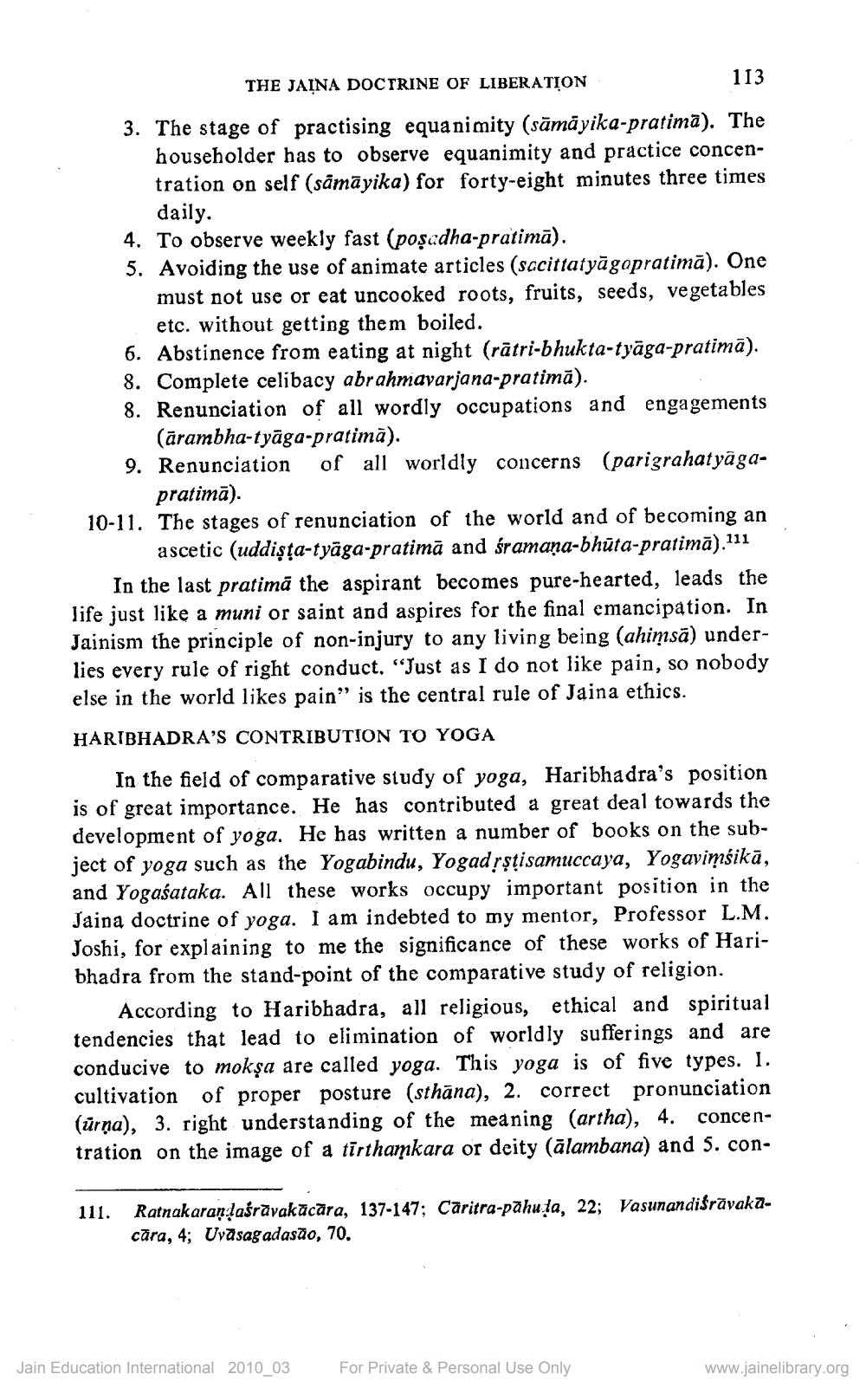________________
THE JAINA DOCTRINE OF LIBERATION
113
3. The stage of practising equanimity (sāmāyika-pratima). The
householder has to observe equanimity and practice concentration on self (sāmāyika) for forty-eight minutes three times
daily. 4. To observe weekly fast (poșadha-pratimā). 5. Avoiding the use of animate articles (sccittatyāgopratimā). One
must not use or eat uncooked roots, fruits, seeds, vegetables
etc. without getting them boiled. 6. Abstinence from eating at night (rātri-bhukta-tyāga-pratimā). 8. Complete celibacy abrahmavarjana-pratimā). 8. Renunciation of all wordly occupations and engagements
(ārambha-tyāga-pratimā). 9. Renunciation of all worldly concerns (parigrahatyāga
pratimā). 10-11. The stages of renunciation of the world and of becoming an
ascetic (uddişța-tyāga-pratimā and śramaņa-bhūta-pratimā).111 In the last pratimā the aspirant becomes pure-hearted, leads the life just like a muni or saint and aspires for the final emancipation. In Jainism the principle of non-injury to any living being (ahimsā) underlies every rule of right conduct. "Just as I do not like pain, so nobody else in the world likes pain” is the central rule of Jaina ethics. HARIBHADRA’S CONTRIBUTION TO YOGA
In the field of comparative study of yoga, Haribhadra's position is of great importance. He has contributed a great deal towards the development of yoga. He has written a number of books on the subject of yoga such as the Yogabindu, Yogad rştisamuccaya, Yogaviņśikā, and Yogaśataka. All these works occupy important position in the Jaina doctrine of yoga. I am indebted to my mentor, Professor L.M. Joshi, for explaining to me the significance of these works of Haribhadra from the stand-point of the comparative study of religion.
According to Haribhadra, all religious, ethical and spiritual tendencies that lead to elimination of worldly sufferings and are conducive to mokşa are called yoga. This yoga is of five types. I. cultivation of proper posture (sthāna), 2. correct pronunciation (ürņa), 3. right understanding of the meaning (artha), 4. concentration on the image of a tirthamkara or deity (ālambana) and 5. con
111.
Ratnakarandašrāvakācāra, 137-147; Caritra-pähuda, 22; Vasunandi$rāvakacāra, 4; Uvasag adasão, 70.
Jain Education International 2010_03
For Private & Personal Use Only
www.jainelibrary.org




